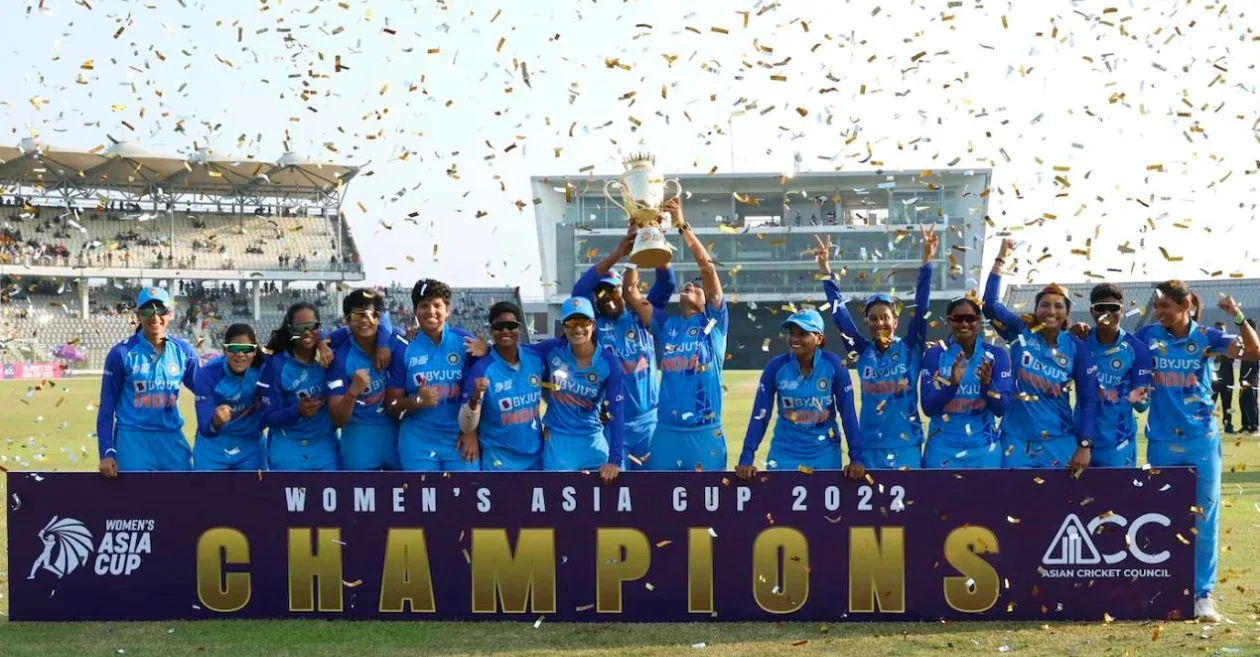The Women’s Asia Cup, organized by the Asian Cricket Council (ACC), stands as a testament to the growth and competitive spirit of women’s cricket in Asia. Since its inception in 2004, this tournament has evolved from a 50-over format to T20Is, reflecting the dynamic nature of the sport. The Women’s Asia Cup has not only showcased top-tier cricket but also fostered regional rivalries and promoted the sport’s development across the continent. This article delves into the tournament’s history, key performances, and evolving dynamics.
The Evolution of the Women’s Asia Cup
From ODI Beginnings to T20 Excitement
The Women’s Asia Cup began with a focus on One Day Internationals (ODIs) when the inaugural tournament was held in Sri Lanka in 2004. India and Sri Lanka faced off in a five-match series, with India emerging as the clear victor. This initial format laid the foundation for what would become a significant event in women’s cricket. As the game evolved, so did the Women’s Asia Cup, transitioning to the T20 format in 2016 to align with the global trend towards shorter formats. This shift has added a new layer of excitement and competitiveness to the tournament.
Impact on Women’s Cricket in Asia
The Women’s Asia Cup has played a pivotal role in advancing women’s cricket in the region. It has provided a platform for emerging talents to showcase their skills on a larger stage and has helped in the development of the game across Asia. The tournament has also fostered intense regional rivalries, contributing to the sport’s growing popularity and competitive edge. By featuring a diverse range of teams and showcasing high-quality cricket, the Women’s Asia Cup has been instrumental in the growth and recognition of women’s cricket in Asia.
Significant Performances and Emerging Rivals
India’s Dominance and Bangladesh’s Breakthrough
India has been the dominant force in the Women’s Asia Cup, winning the title seven times and establishing themselves as the team to beat. The early years of the tournament saw India’s consistent performances, with notable victories over Sri Lanka and Pakistan. However, the landscape began to change with the emergence of Bangladesh as a formidable competitor. In 2018, Bangladesh achieved a historic victory, marking the first time a team other than India won the tournament. This win highlighted the increasing depth and talent in Asian women’s cricket, adding a new dimension to the competition.
Memorable Moments and Key Players
The Women’s Asia Cup has been a stage for several memorable performances and standout players. Indian legends like Mithali Raj and Jhulan Goswami have left an indelible mark on the tournament with their exceptional skills and match-winning performances. Mithali Raj’s leadership and consistency have been particularly noteworthy, while Jhulan Goswami’s bowling prowess has been a key factor in India’s success. The tournament has also seen significant contributions from players like Rumeli Dhar and Salma Khatun, who have played crucial roles for their respective teams.
Tournament Highlights: A Look at the Key Matches
2004: India’s Inaugural Victory
The first Women’s Asia Cup was held in Sri Lanka in April 2004, featuring a five-match ODI series between India and Sri Lanka. India, led by Anjum Chopra and Anju Jain, won all five matches, establishing themselves as the inaugural champions. Anjum Chopra’s outstanding performances earned her the Player of the Series award, while Anju Jain’s 231 runs were instrumental in India’s success.
2016: A Shift to T20 Format
The transition to the T20 format in 2016 brought a new level of excitement to the Women’s Asia Cup. India faced Pakistan in the final, and Mithali Raj’s all-round performance was crucial in setting a competitive total. India won by 17 runs, with Mithali Raj being named both Player of the Series and Player of the Tournament. This edition of the tournament marked the beginning of a new era in women’s cricket, with the shorter format adding a dynamic edge to the competition.
2018: Bangladesh’s Historic Win
The 2018 Women’s Asia Cup, held in Kuala Lumpur, saw Bangladesh clinch their first title with a thrilling three-wicket victory over India. Rumana Ahmed and Salma Khatun played key roles in Bangladesh’s chase, with Rumana Ahmed being named Player of the Match. This win was a significant milestone for Bangladesh and showcased the growing competitiveness in the tournament.
2022: India’s Resounding Victory
In the 2022 edition of the Women’s Asia Cup, held in Sylhet, Bangladesh, India secured their seventh title with a dominant performance against Sri Lanka. Smriti Mandhana’s quickfire innings and Deepti Sharma’s exceptional bowling ensured a comfortable win for India. Sri Lanka’s innings was restricted to 65/9, and India chased down the target with ease. This victory reaffirmed India’s status as a powerhouse in women’s cricket.
Statistics and Key Highlights
India’s Dominance
India’s success in the Women’s Asia Cup is evident from their seven title wins, making them the most successful team in the tournament’s history. Their consistent performances and ability to adapt to different formats have cemented their place as a leading team in women’s cricket. Key players like Mithali Raj, Jhulan Goswami, and Harmanpreet Kaur have been instrumental in India’s success, delivering match-winning performances across various editions of the tournament.
The Rise of New Contenders
While India has been the dominant force, other teams have also made significant strides. Bangladesh’s victory in 2018 marked a turning point, showcasing the increasing depth and talent in Asian women’s cricket. Pakistan and Sri Lanka have also demonstrated competitive performances, with Pakistan reaching multiple finals and Sri Lanka making notable contributions. The evolving dynamics of the tournament highlight the growing competitiveness and the emergence of new challengers.
Consistent Performers and Emerging Stars
The Women’s Asia Cup has been a platform for both seasoned stars and emerging talents. Players like Mithali Raj, Jhulan Goswami, and Harmanpreet Kaur have consistently delivered exceptional performances, while newer players like Smriti Mandhana and Deepti Sharma have made their mark in recent editions. The tournament continues to be a showcase for talent and a breeding ground for future stars.
The Future of the Women’s Asia Cup
Continuing Growth and Development
The Women’s Asia Cup remains a vital event in the women’s cricket calendar, providing a platform for top teams in Asia to compete and showcase their skills. As the tournament continues to evolve, it will play a crucial role in the growth and development of women’s cricket in the region. The transition to the T20 format has added a new dimension to the competition, enhancing its appeal and excitement.
A Bright Future for Women’s Cricket
With increasing talent and competitiveness, the future of the Women’s Asia Cup looks promising. The tournament will continue to foster regional rivalries, promote the sport, and provide opportunities for emerging players. As women’s cricket in Asia continues to grow, the Women’s Asia Cup will remain a key event in the cricketing world, celebrating the achievements and contributions of women cricketers across the continent.
The Women’s Asia Cup has been a cornerstone of women’s cricket in Asia, showcasing excellence, fostering growth, and celebrating the sport’s development. From its early days as an ODI tournament to its current T20 format, the competition has played a significant role in shaping the landscape of women’s cricket in the region. With a history of memorable performances and emerging rivals, the Women’s Asia Cup continues to be a celebration of the sport’s vibrant and evolving nature.
Please check for information on the best betting sites in India – https://selectory.org/best-betting-sites/















